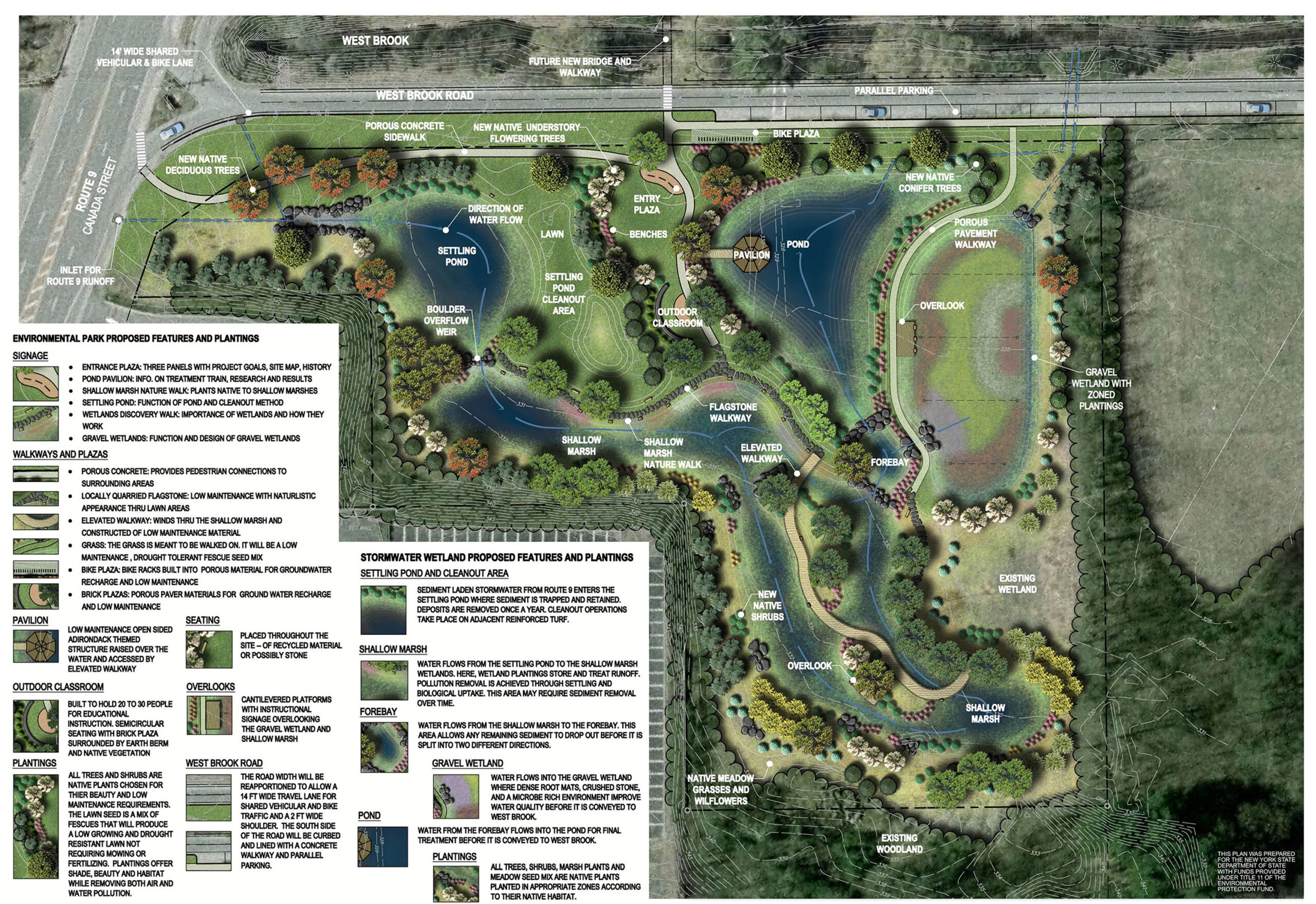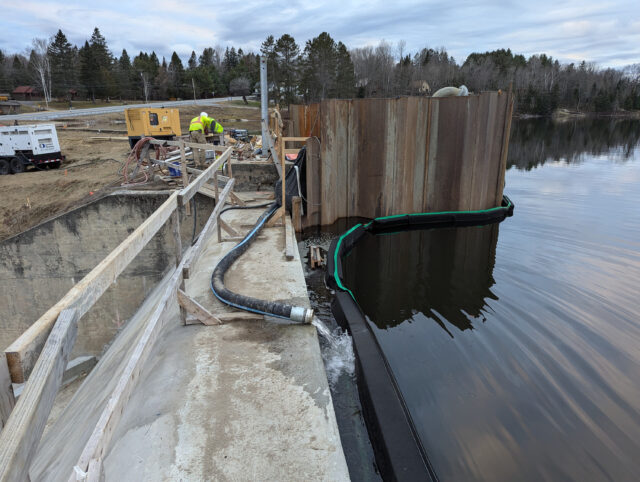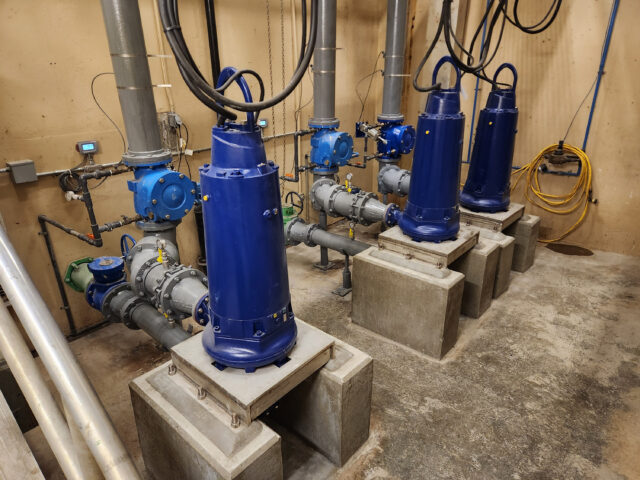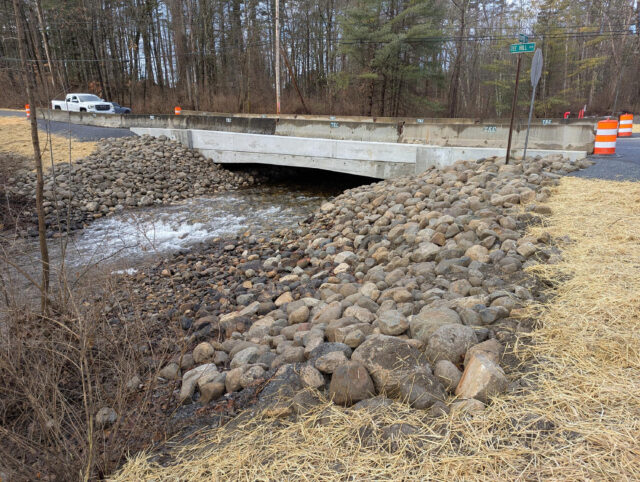

Lake George West Brook Conservation Initiative
Removing Nearly 90% of Pollutants from Lake George's Largest Contributor
West Brook, a Class AA-S trout stream, was recognized as one of the largest contributors to water quality degradation of Lake George. With the goal of improving water quality, the West Brook Conservation Initiative was formed. Through protection, restoration, and implementation of a series of natural stormwater treatment practices, the Initiative aimed for water quality protection within a 4.9-acre environmental education park.
The project targeted a 95-acre watershed, encompassing the southern end of the highly impervious Route 9 corridor in Lake George, for diversion of runoff from the 90th percentile storm into the site for treatment. This watershed contributed significant amounts of Total Suspended Solids (TSS), Total Phosphorus (TP) loads, and other pollutants that historically discharged directly into West Brook and Lake George.
LaBella initiated this work with an alternatives analysis, concept planning, wetlands delineation, survey, and invasive species analysis. Next, we completed environmental and engineering design, construction oversight, and a long-term maintenance plan for the project. Additionally, our team worked with the New York State Department of Environmental Conservation, the New York State Department of Transportation, county and local governments, the Lake George Association, The FUND for Lake George, the US Army Corps of Engineers, and the New York State Adirondack Park Agency to develop the final mitigation and resource management plan.
Stormwater hydrology and hydraulics were modeled to demonstrate how stormwater runoff from the watershed would pass through a constructed forebay, shallow marsh wetlands, and a secondary forebay designed to split the flow between a wet pond with a deep pool and a demonstration gravel wetland prior to discharging the runoff back into West Brook and subsequently Lake George.
LaBella’s work also included designing and sizing water control structures at inlets, spillways, and outlets from the system. In addition to pollutant removal, the design prioritized alleviation of thermal impacts to protect aquatic species such as trout. The project also involved planting more than 20,000 native plants and installing pedestrian paths and interpretive signage highlighting the environmental benefits of the design.
The project was successfully installed and is – as described by the Lake George Association – “a bigger success than originally imagined!” Post-construction pollutant removal results include 89% of nitrate-nitrogen, 86% of total filterable phosphorous, 85% of total phosphorous (designed for 50% removal), and 94% of total suspended solids (designed for 90% removal). The site is a functional public space that is still being continuously monitored for effective pollutant removal.

Total amount of nitrate-nitrogen removed.
Total total amount of filterable phosphorus removed.
Total amount of phosphorus removed (designed for 50% removal).
Total amount of suspended solids removed (designed for 90% removal).













